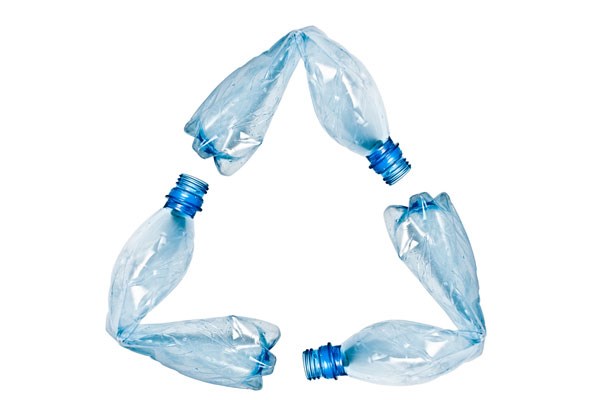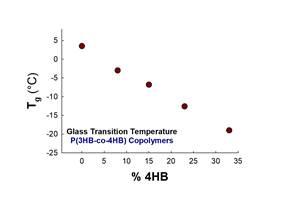Can A Circular Economy Increase Plastics Recycling Rates?
The European Union (EU) has set a goal to recycle 60% of plastic packaging by 2025.

The European Union (EU) has set a goal to recycle 60% of plastic packaging by 2025. But in order to reach this rate, more facilities and jobs need to be added, according to Plastics Recyclers Europe, a trade group for the European plastics recycling industry. The group’s newly released study, Increased EU Plastics Recycling Targets Environmental, Economic and Social Assessment, argues that as many as 250 new sorting facilities as well as 300 new recycling plants are needed in Europe if the target is to be implemented. These investments will create more than 120,000 of jobs across the EU. With the unemployment rate for the EU currently sitting at 9.6%, 120,000 new jobs would be a big help.
But it’s not simply a matter of deciding on a recycling target and crossing fingers that it all works out. Real work and change must be implemented to reach it. This is one reason why the EU recently released a call for the public to help develop a ‘circular economy’ and opened a public consultation to collect views on the main policy options for developing this ambitious new approach. Plastics Recyclers Europe believes this new circular economy package will be a boost to plastics recycling.
The EU’s First Vice President Frans Timmermans said: "Europe's future economic development must be part of a sustainable long-term agenda. We need to use our resources more intelligently, design our products with a view to their reuse and recycling and set ambitious targets for waste reduction and recycling."
The policy options for developing a competitive circular economy in Europe will look at waste policy and beyond and address the full product lifecycle, taking into account the situation in all Member States. It will include actions on intelligent product design, reuse and repair of products, recycling, sustainable consumption, waste policy, recycling levels, smart use of raw materials, stronger markets for secondary raw materials and specific sectorial measures.
The EU states that moving toward a more circular economy can promote competitiveness and innovation by stimulating new business models and technologies as well as facilitating social innovation.
“We want to set the conditions for the creation of more jobs without using and wasting the amount of resources we do today,” the EU stated. “This will contribute to a stronger and fairer Europe and decrease pressures on the supply of raw materials and the environment.”
“We estimate that—not just plastic—but waste prevention, eco-design, reuse, recycling and similar measures could bring net savings of 600 billion euro, or 8% of the annual turnover for businesses in the EU,”said Karmenu Vella, the European commissioner for the environment.
If a circular economy is implemented properly, it may help the EU get to a 'true' recycling economy.
CLOSER LOOK AT A CIRCULAR ECONOMY
Research from McKinsey and Co., a global consulting firm, suggests that the global savings in materials alone could exceed $1 trillion a year by 2025 and that, under the right conditions, a circular economy could become a tangible driver of global industrial innovation, job creation and growth for the 21st century.
A circular economy replaces one assumption—disposability—with another: restoration, the group stated. At the core, it aims to move away from the “take, make and dispose” system by designing and optimizing products for multiple cycles of disassembly and reuse. This effort starts with materials, which are viewed as valuable stock to be used again, not as elements that flow through the economy once. For a sense of the scale involved, consider the fast-moving consumer-goods industry: about 80% of the $3.2 trillion worth of materials it uses each year is not recovered. The circular economy aims to eradicate waste—not just from manufacturing processes, as lean management aspires to do, but systematically, throughout the various lifecycles and uses of products and their components.
Recently, Project MainStream, part of the World Economic Forum’s Circular Economy initiative, has released a new project outline containing three programs to accelerate the transition to a circular economy. One of the programs focuses on plastic packaging, which aims to close the gap between the design of packaging and the design of municipal waste management systems. Currently, a majority of packaging is made from virgin materials, and it is used just once. The organization said that this will be resolved by working with leading companies and cities to create an authoritative global plastic packaging roadmap, which aims to enable a 20-year transition to effective packaging solutions based predominantly on reuse and recycling of plastic, the group stated.
For example, annual material demand for PET and polyester totals about 54 million tons, of which roughly 86% leaks out of the system, according to the group. If Project MainStream can optimize these flows of plastics, it is estimated that nearly $4 billion in value could be created from the better use of PET alone, the group stated.
What are your thoughts about a circular economy? Do you see it gaining traction in the U.S.?
Related Content
Film Extrusion: Boost Mechanical Properties and Rate of Composting by Blending Amorphous PHA into PLA
A unique amorphous PHA has been shown to enhance the mechanical performance and accelerate the biodegradation of other compostable polymers PLA in blown film.
Read MoreThe Importance of Mass Balance in Chemical Recycling
Approaches to mass balance can dramatically impact calculations of recycled content.
Read MoreInside the Florida Recycler Taking on NPE’s 100% Scrap Reuse Goal
Hundreds of tons of demonstration products will be created this week. Commercial Plastics Recycling is striving to recycle ALL of it.
Read MoreProcessing Megatrends Drive New Product Developments at NPE2024
It’s all about sustainability and the circular economy, and it will be on display in Orlando across all the major processes. But there will be plenty to see in automation, AI and machine learning as well.
Read MoreRead Next
Making the Circular Economy a Reality
Driven by brand owner demands and new worldwide legislation, the entire supply chain is working toward the shift to circularity, with some evidence the circular economy has already begun.
Read MoreSee Recyclers Close the Loop on Trade Show Production Scrap at NPE2024
A collaboration between show organizer PLASTICS, recycler CPR and size reduction experts WEIMA and Conair recovered and recycled all production scrap at NPE2024.
Read More
























